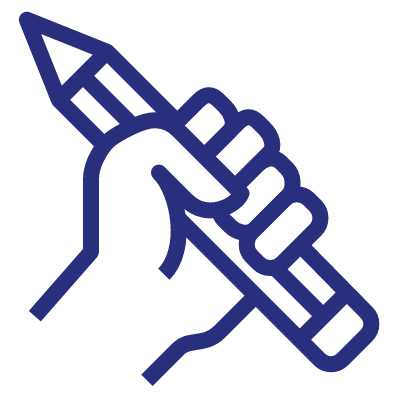Develop a thorough understanding of the mechanics of materials – an area essential for success in mechanical, civil and structural engineering -- with the analytical approach and problem-solving emphasis found in Goodno/Gere’s leading MECHANICS OF MATERIALS, ENHANCED, 9th Edition. This book focuses on the analysis and design of structural members subjected to tension, compression, torsion and bending. This ENHANCED EDITION guides you through a proven four-step problem-solving approach for systematically analyzing, dissecting and solving structure design problems and evaluating solutions. Memorable examples, helpful photographs and detailed diagrams and explanations demonstrate reactive and internal forces as well as resulting deformations. You gain the important foundation you need to pursue further study as you practice your skills and prepare for the FE exam.
- THIS EDITION PRESENTS TODAY'S BEST FE EXAM PREPARATION FOR STUDENTS. An invaluable appendix includes more than 150 problems typical in type and format to those found on the FE (Fundamentals of Engineering) Examination to assist your students in preparing for success on the exam.
- EXAMPLE PROBLEMS, DETAILED PHOTOS AND THOROUGH ILLUSTRATIONS CLARIFY KEY CONCEPTS. State-of-the-art graphics and photographs relate theory to actual professional scenarios so that students can see real problems alongside simplified models and diagrams for analysis. These graphics also heighten student interest and demonstrate the practical relevance of what they're learning.
- BOOK OFFERS UNMATCHED CLARITY AND ACCURACY YOU CAN TRUST. The author team has invested significant effort in designing, checking, and proofreading both the explanatory text and all supporting examples and problems.
- MORE THAN 1,200 MULTI-PART PROBLEMS PROVIDE IDEAL OPTIONS FOR HOMEWORK ASSIGNMENTS AND CLASSROOM DISCUSSION STARTERS. These exercises are arranged in order of difficulty and placed at the end of each chapter, making them easy to locate without disrupting the chapter’s subject matter. Problems are divided by sections for your convenience.
- THIS EDITION IS RECOGNIZED FOR ITS UNMATCHED CLARITY AND ACCURACY. The author team has invested significant effort in designing, checking and proofreading both the explanatory text and all supporting and current examples and problems.
- ALL PROBLEMS OFFER QUICK-REFERENCE ANSWERS FOR STUDENTS AND DETAILED SOLUTIONS FOR YOU. To assist your students in learning and study, answers for problems are located in the back of the book while more detailed solutions appear in the Instructor’s Solutions Manual.
- EACH CHAPTER CONCLUDES WITH A DETAILED SUMMARY AND REVIEW. These helpful summaries and review sections highlight all of the important concepts and formulas within every chapter. Students can use these quick reference summaries and reviews as valuable study aids to prepare for mid-term and final examinations.
- CONCISE CHAPTER OBJECTIVES INTRODUCE KEY LEARNING GOALS. These brief learning objectives at the beginning of each chapter direct your students’ attention to the chapter’s most important concepts and skills.
- DISTINCT, ENGAGING EXPLANATIONS FURTHER CLARIFY CONCEPTS. This edition includes a wealth of interesting, current and student-friendly examples to help your students thoroughly explore both the theories and applications within mechanics of materials.
- INTRODUCTORY PROBLEMS BEGIN EACH SECTION WHILE CAPTURING THE READER'S ATTENTION. These problems now begin the sections in each chapter and are followed by representative problems arranged in order of increasing difficulty. Sections also include advanced problems, as well as computer problems, when relevant.
- FREE BODY DIAGRAMS REINFORCE STUDENT UNDERSTANDING. These diagrams, which clearly illustrate applied forces, movement and reactions on a body, appear throughout the book. These graphic illustrations ensure students comprehend fundamental concepts from statics, which is a prerequisite for this course.
- DETAILED PHOTOGRAPHS AND HELPFUL ILLUSTRATIONS EMPHASIZE PRACTICAL ENGINEERING APPLICATIONS. Students clearly see the importance of the topics they are studying as this edition's photos and advanced illustrations depict a broad range of applications in a variety of engineering disciplines.
- THIS EDITION'S EXAMPLES AND PROBLEMS USE BOTH SI AND USCS UNITS. This book incorporates both the International System of Units (SI) and the U.S. Customary System (USCS) throughout the examples and problems, allowing students to gain proficiency using both systems.
- END-OF-CHAPTER PROBLEMS OFFER FLEXIBILITY IN ASSIGNING HOMEWORK. This edition, respected for its accuracy and thorough presentation, now offers numerous additional multi-faceted problems to reinforce the concepts and skills students are learning.
- EXAMPLES THROUGHOUT THIS EDITION DEMONSTRATE A NEW FOUR-STEP PROBLEM-SOLVING APPROACH. Students learn how to systematically analyze, dissect and solve structural design problems, as well as evaluate solutions with this helpful four-step approach. This feature further ensures students are able to develop reasonable, consistent solutions when approaching similar problems.
1. TENSION, COMPRESSION, AND SHEAR
2. AXIALLY LOADED MEMBERS.
3. TORSION.
4. SHEAR FORCES AND BENDING MOMENTS.
5. STRESSES IN BEAMS (BASIC TOPICS).
6. STRESSES IN BEAMS (ADVANCED TOPICS).
7. ANALYSIS OF STRESS AND STRAIN.
8. APPLICATIONS OF PLANE STRESS (PRESSURE VESSELS, BEAMS, AND COMBINED LOADINGS).
9. DEFLECTIONS OF BEAMS.
10. STATICALLY INDETERMINATE BEAMS.
11. COLUMNS.
References and Historical Notes.
APPENDIX A: SYSTEMS OF UNITS AND CONVERSION FACTORS.
APPENDIX B: PROBLEM SOLVING.
APPENDIX C: MATHEMATICAL FORMULAS.
APPENDIX D: REVIEW OF CENTROIDS AND MOMENTS OF INERTIA.
APPENDIX E: PROPERTIES OF PLANE AREAS.
APPENDIX F: PROPERTIES OF STRUCTURAL-STEEL SHAPES.
APPENDIX G: PROPERTIES OF STRUCTURAL LUMBER.
APPENDIX H: DEFLECTIONS AND SLOPES OF BEAMS.
APPENDIX I: PROPERTIES OF MATERIALS.
Barry John Goodno
Barry John Goodno is Professor of Civil and Environmental Engineering at Georgia Institute of Technology. He joined the Georgia Tech faculty in 1974. He was an Evans Scholar and received his B.S. in Civil Engineering from the University of Wisconsin, Madison, and his M.S. and Ph.D. degrees in Structural Engineering from Stanford University. He holds a professional engineering license (P.E.) in Georgia, is a Distinguished Member of ASCE and an Inaugural Fellow of SEI and has held numerous leadership positions within ASCE. He is a member of the Engineering Mechanics Institute (EMI) of ASCE and is a past president of the ASCE Structural Engineering Institute (SEI) Board of Governors. He is also past-chair of the ASCE-SEI Technical Activities Division (TAD) Executive Committee and past-chair of the ASCE-SEI Awards Committee. In 2002, Dr. Goodno received the SEI Dennis L. Tewksbury Award for outstanding service to ASCE-SEI. He received the departmental award for Leadership in Use of Technology in 2013 for his pioneering use of lecture capture technologies in undergraduate statics and mechanics of materials courses at Georgia Tech. Dr. Goodno is also a member of the Earthquake Engineering Research Institute (EERI) and has held leadership positions within the NSF-funded Mid-America Earthquake Center (MAE), directing the MAE Memphis Test Bed Project. Dr. Goodno has carried out research, taught graduate courses and published extensively in areas of earthquake engineering and structural dynamics during his tenure at Georgia Tech. Like co-author and mentor James Gere, he has completed numerous marathons including qualifying for and running the Boston Marathon in 1987.
James M. Gere
James M. Gere (1925-2008) earned his undergraduate and M.A. degrees in Civil Engineering from the Rensselaer Polytechnic Institute, where he worked as instructor and research associate. He was awarded one of the first NSF Fellowships and studied at Stanford, where he earned his Ph.D. He joined the faculty in Civil Engineering, beginning a 34-year career of engaging his students in mechanics, structural and earthquake engineering. Dr. Gere served as Department Chair and Associate Dean of Engineering and co-founded the John A. Blume Earthquake Engineering Center at Stanford. Dr. Gere also founded the Stanford Committee on Earthquake Preparedness. He was one of the first foreigners invited to study the earthquake-devastated city of Tangshan, China. Although he retired in 1988, Dr. Gere continued to be an active, valued member of the Stanford community. Known for his cheerful personality, athleticism and skill as an educator, Dr. Gere authored nine texts on engineering subjects starting with this leading book, MECHANICS OF MATERIALS, which was inspired by teacher and mentor Stephan P. Timoshenko. His other well-known textbooks, used in engineering courses around the world, include: THEORY OF ELASTIC STABILITY, co-authored with S. Timoshenko; MATRIX ANALYSIS OF FRAMED STRUCTURES and MATRIX ALGEBRA FOR ENGINEERS, both co-authored with W. Weaver; MOMENT DISTRIBUTION; EARTHQUAKE TABLES: STRUCTURAL AND CONSTRUCTION DESIGN MANUAL, co-authored with H. Krawinkler; and TERRA NON FIRMA: UNDERSTANDING AND PREPARING FOR EARTHQUAKES, co-authored with H. Shah. In 1986 he hiked to the base camp of Mount Everest, saving the life of a companion on the trip. An avid runner, Dr. Gere completed the Boston Marathon at age 48 in a time of 3:13. Dr. Gere is remembered as a considerate and loving man whose upbeat humor always made aspects of daily life and work easier.







